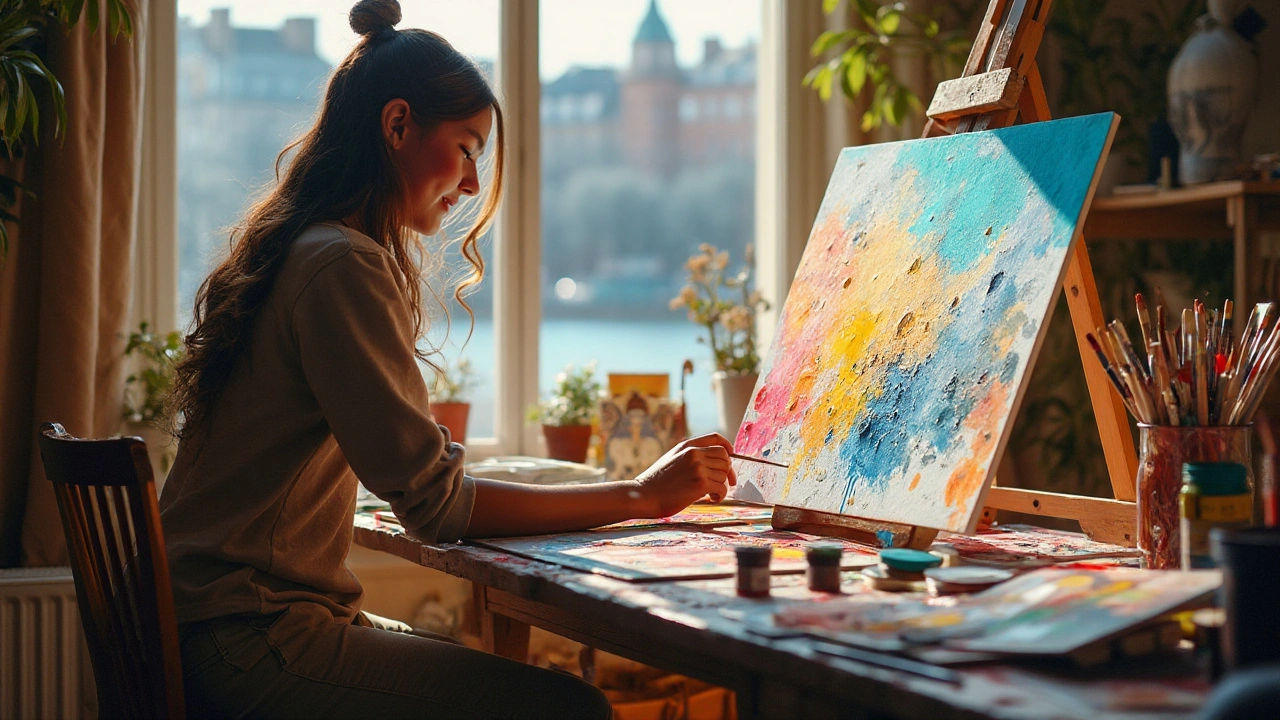Creative therapies: how art, music and movement help you feel better
Creative therapies use making and doing—not just talking—to help people cope, heal, and grow. Sound weird? Try sketching for 10 minutes when you’re anxious. You’ll be surprised how quickly feelings show up and shift. These approaches are practical: they give you tools to express things that words can’t hold.
Types of creative therapies
Art therapy: drawing, painting, collage. You don’t need to be an artist. The point is expression and reflection with a trained therapist who guides meaning and next steps.
Music therapy: listening, songwriting, or playing simple instruments. Certified music therapists match sound to mood and goals—calming anxiety, boosting motivation, or aiding memory.
Dance/movement therapy: use body movement to release tension, reconnect with emotions, and build body awareness. It’s helpful for stress, trauma recovery, and chronic pain.
Drama and psychodrama: role play and storytelling let you try different ways of being and rehearse real-life conversations in a safe space.
Expressive writing and poetry: short writing exercises help sort thoughts, track progress, and reduce rumination. Ten minutes of free-writing after a stressful event can cut worry on the spot.
Why try creative therapies?
They reach feelings that talk therapy may miss. People often report lower anxiety, steadier mood, and clearer thinking after regular creative sessions. For kids, play and art make emotions concrete. For older adults, music can spark memory and connection. Athletes and rehab patients use movement-based therapy to speed recovery by improving body awareness.
These methods are flexible. You can use them alone at home or with a professional. That makes them useful whether you need quick stress relief or long-term emotional work.
Here are practical ways to get started today: try a 10-minute sketch when stressed, write a one-page letter you never send, move to three favorite songs and notice how your body changes. Small, consistent actions add up faster than rare big efforts.
How to pick a provider: look for credentials—registered art therapist (ATR), board-certified music therapist (MT-BC), or a licensed therapist trained in expressive methods. Ask what training they have, what a typical session looks like, and how they measure progress.
What to expect in a session: a quick check-in, a guided creative activity, and a short reflection. You won’t be judged on skill—only on what the activity reveals for you. If you have trauma, tell the therapist up front so they can pace the work safely.
Mix and match. Try an art class one week, a short writing habit the next, and a movement session after that. That variety helps you discover which tools actually change your mood and day-to-day habits.
Want a realistic first step? Book one consultation with a qualified creative therapist or join a local community workshop. The goal is simple: find one practical, repeatable creative habit that helps you feel steadier and clearer.

Exploring the Impact of Creative Arts Therapies on Modern Mental Health
Creative arts therapies are revolutionizing the way mental health treatment is approached by integrating artistic forms such as music, art, dance, and drama into traditional therapeutic practices. This multifaceted method appeals to a wide range of individuals seeking alternative ways to express emotions and heal from past traumas. By fostering creativity, these therapies promote self-discovery and personal growth in unique environments. They offer new pathways to mental wellness beyond conventional talk therapy. Discover how creative arts therapies are reshaping the landscape of mental health support.
Read More
Unleashing Emotional Healing through Creative Arts Therapies
Explore the transformative power of creative arts therapies as a unique avenue for emotional healing. Discover how expressive forms like painting, music, and drama can assist individuals in processing emotions, overcoming trauma, and enhancing mental health. Learn about different techniques and approaches within creative arts therapies and their effectiveness in promoting psychological well-being. See how these therapies offer a personalized and engaging path to self-discovery and emotional resilience.
Read More